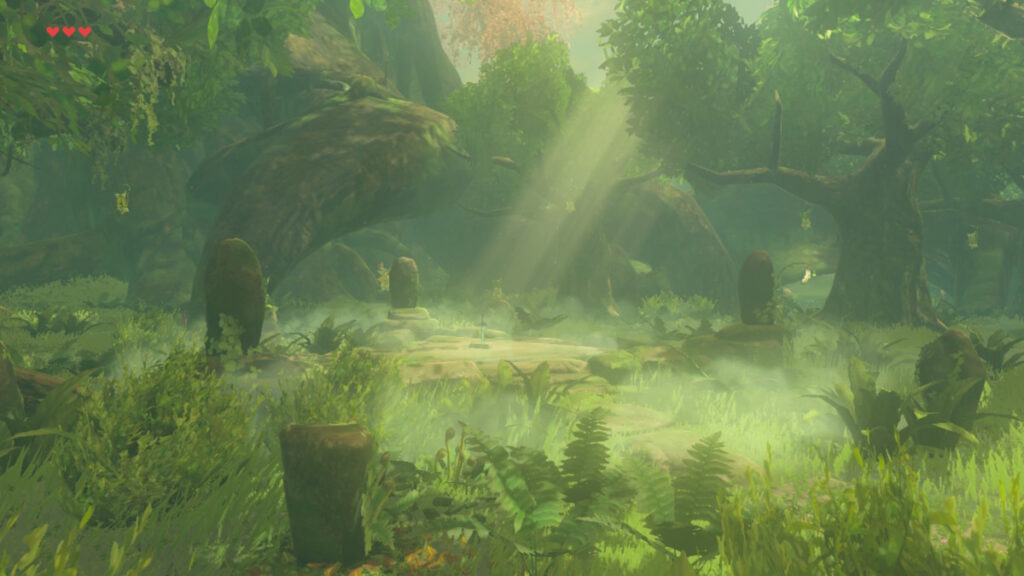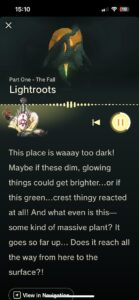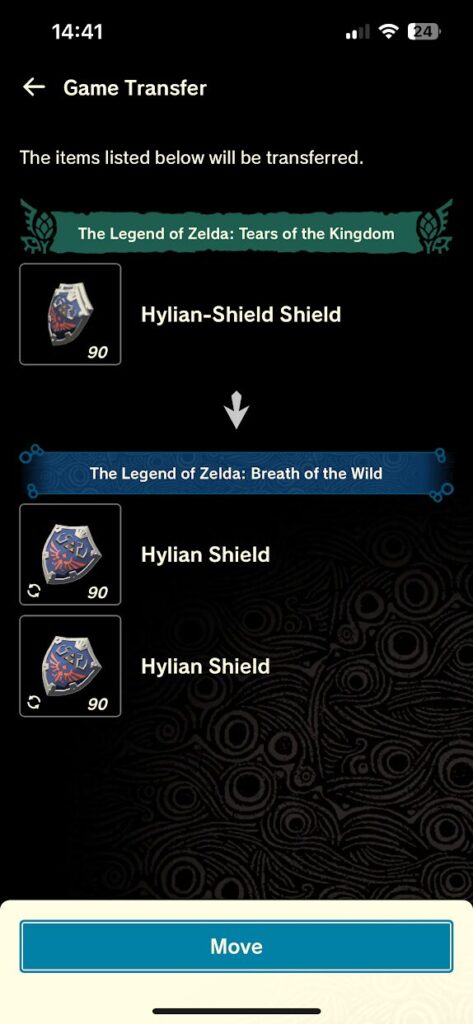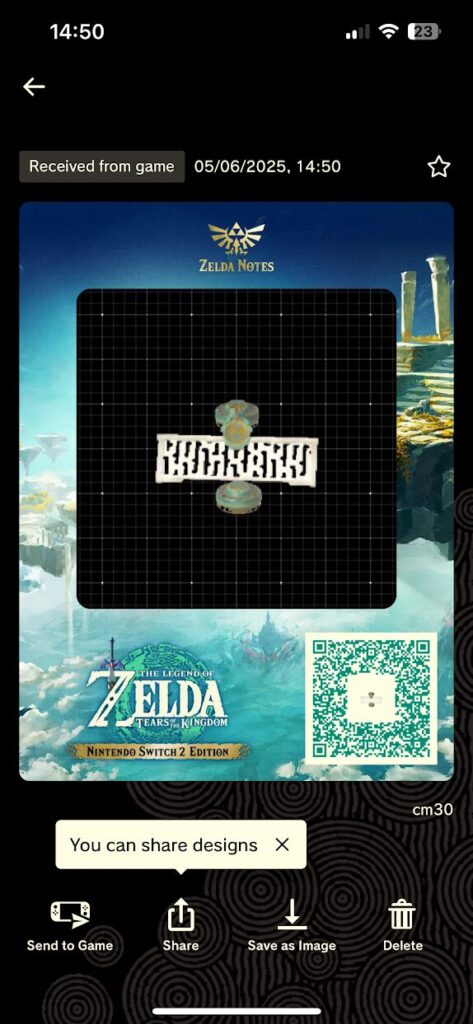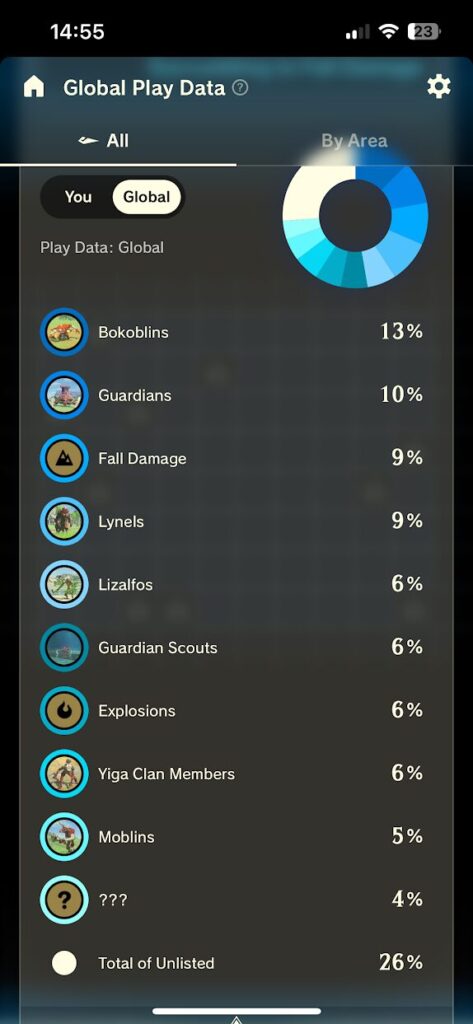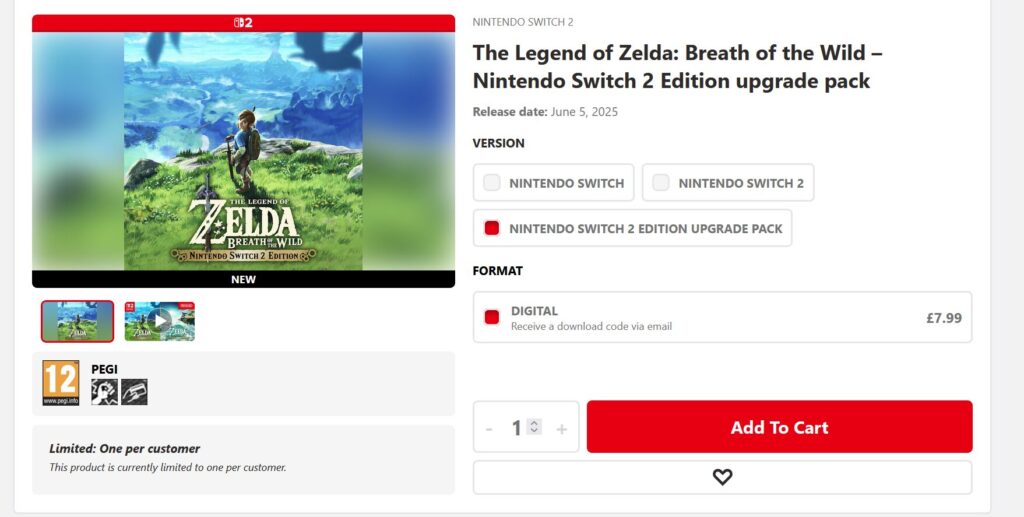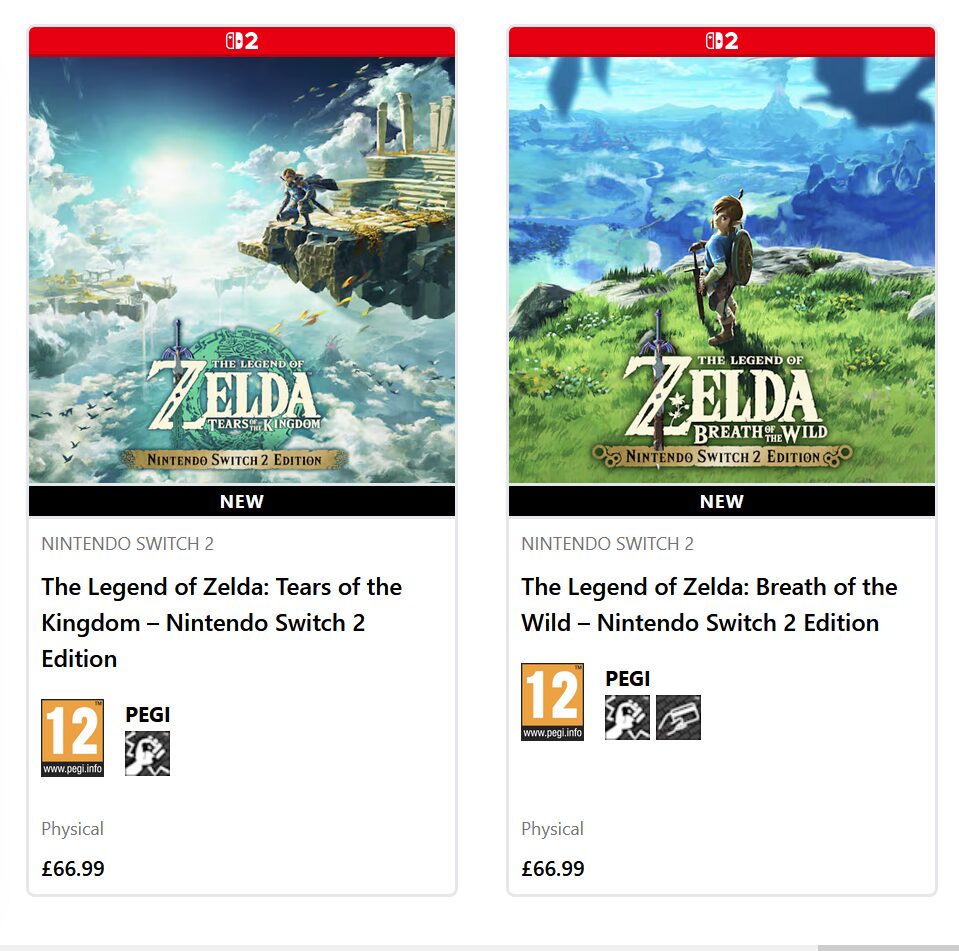Well folks, it’s finally here! The Nintendo Switch 2 has now launched worldwide, with games like Mario Kart World bringing a whole new generation of players to the gaming community.
But we’re not talking about that game just yet. We’ll get to that one in good time.
Instead, we’re talking about the Switch 2 editions of The Legend of Zelda: Breath of the Wild and The Legend of Zelda: Tears of the Kingdom. These were our most anticipated purchases after Mario Kart World, and the most promising versions of the games so far. In theory, the better performance and Zelda Notes integration makes them the definitive way to play, bar none.

And for the most part, that’s true. These are the best versions of Breath of the Wild and Tears of the Kingdom you can buy.
With the improved performance being a huge part of that. Put simply, they really taxed the Wii U and Switch hardware. They worked yes, and their tech was incredibly impressive for the hardware of the time…
But you could tell right away that the system often struggled to keep up. Especially in Korok Forest in Breath of the Wild where the frame rate took a notable dip every time you visited. Or more hectic encounters in Tears of the Kingdom where the sages, Mineru’s Construct, Zonai devices, Link and numerous enemies were running around on screen.
The Switch 2 Editions have no such issues. They run silky smooth regardless of whether they’re in docked or handheld mode, and effortlessly display Hyrule at its best. Heck, it’s so insane that speedrunners have found that traversing Hyrule quickly doesn’t lag the game anywhere near as much anymore; you can just bounce off a Bokoblin’s head near the Temple of Time, and go soaring into the distance without a care in the world.

However, improved tech isn’t the only addition here. No, the aforementioned Zelda Notes integration does a lot to change up the game too.
Since this mobile app integration actually adds a ton of useful features to the mix. You can share items with other players or send them between games. There are all new voice memories to find featuring characters like Zelda, Rauru and Master Kohga. Plus, you can even do things like track your stats against other players worldwide, or get a full-blown satnav for finding those pesky collectables.
It’s all rather nice to see, and just makes the games that much more feature complete because of it.
Unfortunately, said integration has its downsides too. That being, it always leaves us wondering why none of this was implemented into the base games themselves.
Cause while there’s definitely been some attempt to integrate things here, with a new setting and key items to track things like item transfers, there are a lot of aspects which really feel clunky due to the reliance on a smartphone and the Switch Online app.
Like say, the aforementioned voice memories. In theory, you’d think these would be better implemented in the game itself. You’d have a list of them in the pause menu like you do normal memories, there would be an icon or in-game object marking their spot in the game world, and you’d probably be able to view their locations on the map once you’ve found them.
Unfortunately, none of this is the case here. The memories are all entirely contained with the app, and the only thing the game does is send the player’s location to said app so it can figure out what one to play.
This wrecks the immersion stone dead. Now, instead of just being able to explore Hyrule and get some nice juicy lore in otherwise underutilised areas, you have to play with one eye looking at your phone and the other looking at the TV screen.
Since trying to actually find these things without seeing the app is one hell of a chore. They’ve got nothing marking them in game, their locations feel somewhat arbitrary even when you know the landmarks they’re associated with, and the only audio cue you get is a tiny Sheikah Sensor like radar that sometimes fails to work.
So, the only two options you often have are to go full GPS mode and have the app guide you directly to them, or keep the navigation screen open so you can actually see the memory locations alongside Link’s current position. It’s not really ideal in either case, and makes it hard to appreciate the system.
It’s a real shame to be honest, since content wise, these memories are actually pretty fun to listen to. Okay, they usually won’t redo the whole story or add huge plot twists not found in the base game…
But they’ll provide some extra context nonetheless, including a detailed recap of Kohga’s entire journey through the Depths. It’s all great stuff here, and with the original voice actors reprising their roles, feels like something that could have fit nicely in the game itself.
As for the other features there, well they work about as well as expected. Item Sharing does what you’d expect it to, letting you share items between players and games. It’s got the obvious limits on what can be shared here (no armour or key items, no Master Sword), and you can only use it a certain number of times per day (once)…
Yet it does work well nonetheless. Interestingly, the developers actually put some serious work into figuring out how items can translate between games too, since there’s a whole system in play to determine what item in BotW becomes what item in TotK and vice versa. For example:
- If the item is in both games (like the Lightscale Trident or Great Eagle Bow), it gets copied over directly.
- If the item has a direct equivalent, like the different horn shards in each game, it gets transformed into the relevant one for the game in question.
- If there’s no direct equivalent, but there’s something sorta similar, the game uses that instead. For example, a Savage Lynel Crusher becomes a White-Maned Lynel Blade in Tears of the Kingdom.
- For fused items with no equivalent, it splits them into their component parts for Breath of the Wild. So, the Hylian Shield-Shield becomes two Hylian Shields.
- And finally, if the game has no idea what to do, it just gives you the monetary equivalent of the item instead, with the amount given presumably being based on the sales price in shops.
It’s a surprisingly clever setup, and one that goes far further than we’d ever expect for a service like this. Kudos to Nintendo, that’s for sure.
Autobuild Sharing is pretty similar. You select a design to share, and can send it to the app. From there, you can generate a QR code to let friends and strangers import the device into their own games.
Again, it’s a pretty well-designed system, and allows pretty much any design you can build in-game to be shared this way, no matter how exotic or crazy the parts you used were.
Unfortunately, it does have one minor issue. You can only send designs to Zelda Notes, if you select them in your Autobuild history.
This isn’t the end of the world, since every favourited design also gets preserved in your history too, but it is a bit clunky nonetheless. Why not let us share from our favourites list Nintendo?
The other features are a bit less exciting. Photo mode is nifty enough, with the ability to edit photos and add effects to them…
But it’s hardly gonna set the world on fire here. It’s basically like they separated the photo editing features from Mario Odyssey and Bowser’s Fury into its own app, and called it a day.
Navigation is cool in its own way. It’s basically a satnav for Hyrule, with the ability to guide you to any landmark or notable object in the game.
And it’s incredibly comprehensive too. Okay, you can’t literally use the Sheikah Sensor and set any object in the game as a target…
But anything remotely notable is available to get directions too. Overworld bosses and Lynels? Check. Shrines, towers, Lightroots, Adison signs and Korok seeds? Check. Heck, even things like side quests and towns and stables can be targets here, in case you didn’t find Lurelin Village the first time through Breath of the Wild.
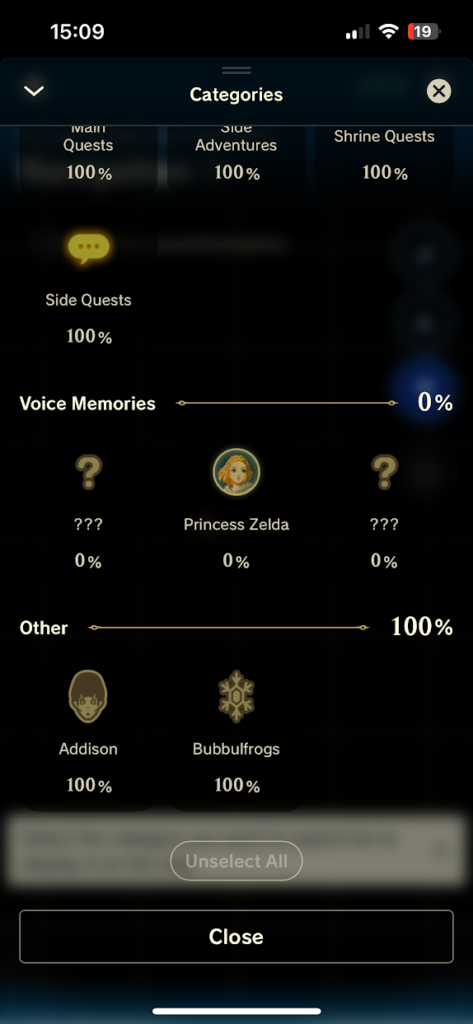
The navigation feature lets you get guided to any notable object, puzzle, location or enemy in the two games
It’s all very impressive, and with clear and easy to follow voice directions, something that’s going to make 100% completion way easier than before…
Yet it also leaves us a tad conflicted too.
Since well, the very feature basically kills the point of the games stone dead. The whole point of these games is that they’re adventures you take on yourself in your own way. That no two playthroughs are the same, since everyone finds their own path through Hyrule to the final battle.
Zelda Notes Navigation replaces that with a hyperactive tour guide with an itinerary. In theory, you can literally turn your brain off and follow the thing like a robot or well-trained dog.
So, it’s a nice feature for completionists, but we’d definitely recommend newer players avoid it at all costs until they’ve beaten the main story.
Finally, there are now stats. These tell you things like how many times you’ve died (and to what causes), how much money you’ve collected throughout the game, how long you’ve been playing and what things you’ve completed in game.
And these are a mixed bag.
On the one hand, it’s fun to see how players worldwide compare to you on a variety of metrics. Knowing you’ve played more of Tears of the Kingdom that 99% of the population is sorta humbling, you know?
At the same time, the local stats themselves aren’t particularly accurate either. You see, Nintendo didn’t really track how much you’d collected or how many meals you’d eaten before Zelda Notes came out. As a result, there’s no data for it in games before version 1.8.
So the app doesn’t actually have accurate data for these. They just start counting from 0 from version 1.8 onwards.
As a result, not only are these stats completely wrong, but they’re also a slog to grind for medals in too, since it’s only counting your playtime since upgrading to the Switch 2 versions of the games.
Which brings us to medals. Yeah, the game rewards you with medals for reaching a certain target value for each stat. For example, you get the ‘Hylian Resident Master’ medal for playing BotW or TotK for at least 200 hours or more.
They’re a neat bonus, and they’re certainly something you’ll enjoy getting if you’re into that kind of thing…
But they’re also a slog too, since the stats are often incorrect due to the lack of data. So instead of just celebrating the 2,000 meals you’ve probably eaten since 2017…
You’ll have to have Link eat another few hundred starting from the moment you power up the Switch 2 Edition. It’s honestly a chore, and something that’s been completely ruined by the game’s technical limitations and the lack of available data on Nintendo’s end.
Regardless, Zelda Notes is a mixed bag. It’s got some nice new features like Item and Autobuild Sharing, the Navigation and Voice Memories are fun additions, and the stats are theoretically neat to look at once or twice…
But it’s also held back by some abysmal UI design, and some very questionable tech decisions on Nintendo’s part.
And that brings us to the value of these upgrades. Are they worth buying?
Well, it depends. You see, there are three ways to get these Switch 2 editions of Breath of the Wild and Tears of the Kingdom.
If you already own the games, you can just buy the upgrade for under a tenner on the Switch 2 eShop, or get it for free with the Switch Online Expansion Pack. In that case, there’s no reason not to buy the upgrades. They improve the games, fix the performance issues and add some nice Zelda Notes features to extend your playtime a bit.
At the same time though, you can also buy the whole games for Switch 2 as well.
And these versions are a total rip-off. They cost more than the Switch 1 versions, despite being slight upgrades of 3 or even 8-year-old games, don’t come with the DLC in the case of Breath of the Wild, and really only provide the original game with the download for the Switch 2 version bolted on top. Heck, the Switch 2 carts for these can even be played in the original Switch if you try to test them there!
So they’re really not worth bothering with. Better to just find BotW and TotK for cheap online, then get the upgrades separately instead. You’ll save a ton of money, and be able to actually afford games like Mario Kart World and DK Bananza.
Still, Breath of the Wild and Tears of the Kingdom on Switch 2 are the definitive ways to play. They run better than on Switch, they’ve got some nice quality of life features to add some extra replayability, and the Zelda Notes compatibility is a lovely touch, even if the implementation sometimes leaves a bit to be desired.
They’re not worth buying the full game for on Switch 2, but if you already own it, there’s no reason not to get the upgrades. Definitely check ’em out if you’re a Switch 2 owner with copies of BotW and TotK!
80%
